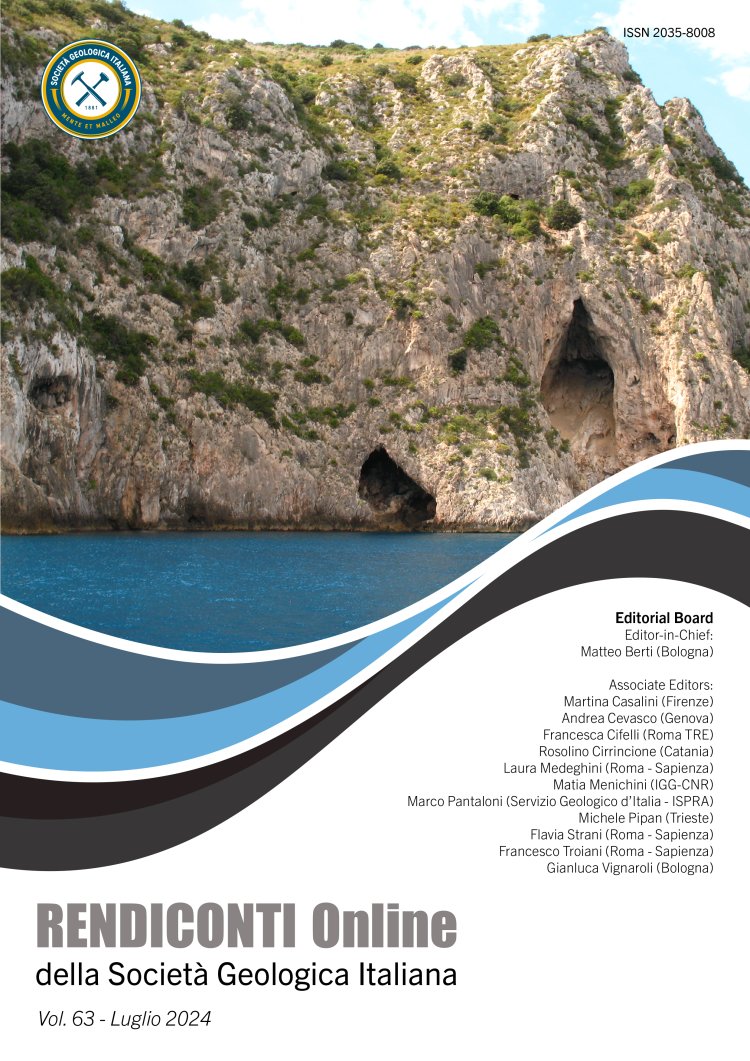
Microbially induced Ca-carbonate authigenic deposition in the Mercure palaeolake (Middle Pleistocene - Southern Italy)
Edoardo Perri1, Mario Borrelli1, Gaetano Robustelli1, Elena Manzo2, Salvatore Guerrieri1 & Pierluigi Santagati1
1Dipartimento di Biologia, Ecologia e Scienze della Terra, Università della Calabria, Arcavacata di Rende, Cosenza, Italy.
2Shell, Carel van Bylandtlaan 16, 2596 HR The Hague, the Netherlands.
Corresponding author e-mail: mario.borrelli@unical.it
Volume: 63/2024
Pages: 25-30
Abstract
The varved carbonates of the Mercure Basin are representative of a palaeolake basinal setting, where the normal pelagic sedimentation was interrupted by occasional sedimentary flows triggered by the intrinsic lake dynamics (river floods, storms, etc.). The presence of in place charophytes green algae oogonia testifies a limited lake depth that favored the necessary light filtration for this biota. In this environmental setting, micrite is the dominant component and it occurs with microbial aphanitic and clotted fabrics. At the nanoscale both micrite types are characterised by a tight aggregation of nanospheres forming irregular to globular major-size clots, spherical and semi-cylindrical aggregates with a common internal hollow structure, typical of microbial-induced mineralization processes. Moreover, the hollow structures of the nanospheres aggregates could be linked with green algae and bacteria cells whose blooms may cause whiting phenomena.
Keywords
Get Full Text